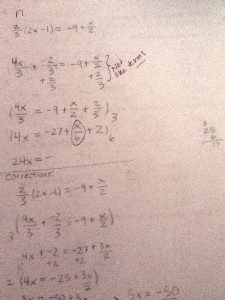For this triangle, the degree is the variable. To find the value of x, first we will need to label the sides:
Sine is being used to solve the equation because the measurements of the hypotenuse and opposite sides are provided.
To isolate x, use algebra to cancel out the sine on the left side. What you do to one side, you must do to the other, so the equation becomes:
Plug those numbers in on your calculator and you get , which is the answer!
This time, a degree and only one side length is given. In this case, x is the denominator of the fraction, which makes the problem a bit more complicated.
We know that when we switch two fractions around, like so:
—>
They are equivalent. So, we can use this trick to make the equation easier to solve:
—>
The x is the numerator in this equation. So you will have to solve this equation in a different way compared to the last two.
Since the x is being divided by 50, if we multiply it by 50 the 50 will be canceled out. This means we also have to multiply the other side by 50:










